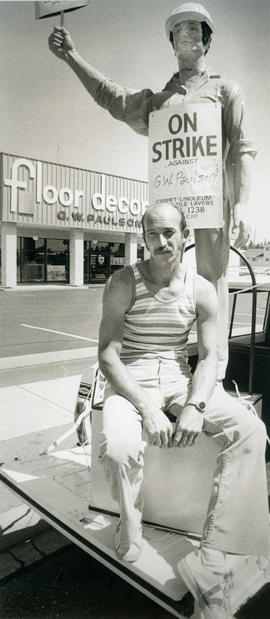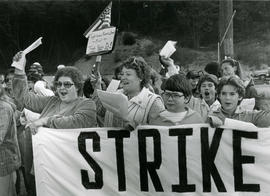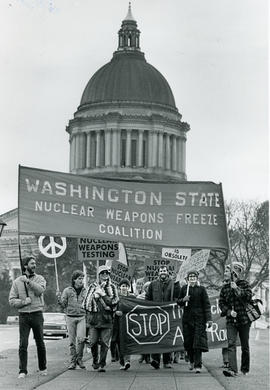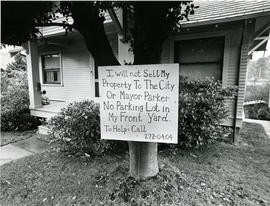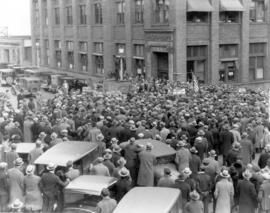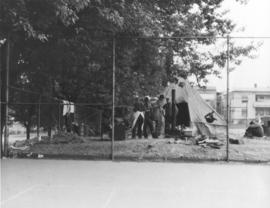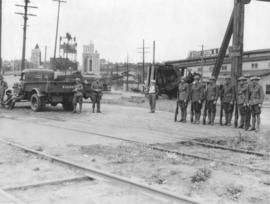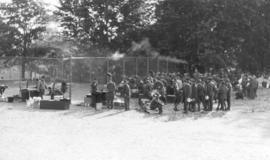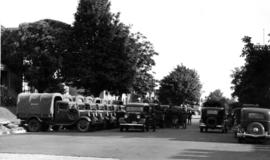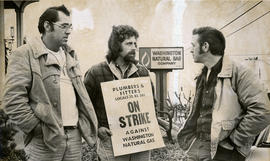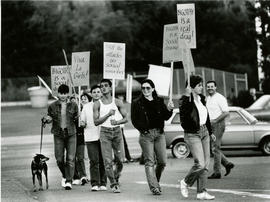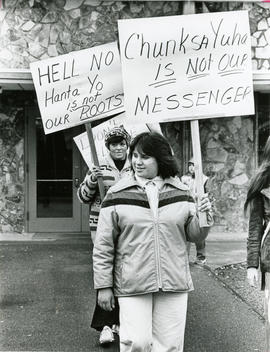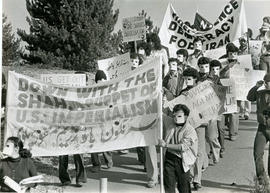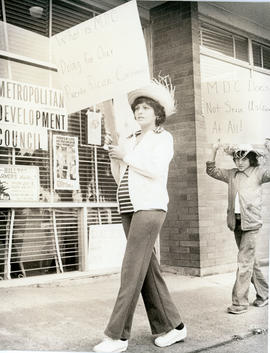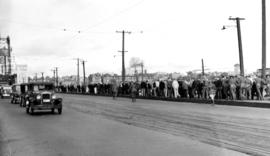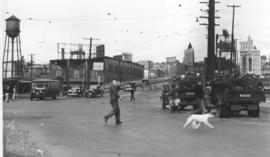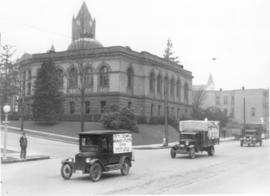On March 1, 1933 at around 12 noon, a convoy of trucks and automobiles carried unemployed demonstrators through Tacoma on their way to Olympia. Here they are pictured passing on Tacoma Ave. South in front of the Tacoma Public Library (now known as the TPL Carnegie Building.) The Seattle planners of the march planned to descend on the Capital and present their demands for jobless insurance and a cash dole to the State Legislature. The main section of around 150 vehicles passed through Tacoma without trouble or disturbance, but they were met outside Olympia by police and state patrol and denied access to the city. The protestors, estimated at 2,000, camped at Priest Point Park on the outskirts of Olympia. They were denied a permit for a demonstration at the Capital. A committee of 20 met with Governor Clarence D. Martin who declined their demands. They were then asked to return home, which they did peacefully. (TNT 3/1/33, pg.1; 3/2/33, pg. 1; 3/3/33, pg. 5; TDL 3/2/33, pg. 1; 3/3/33, pg. 1)
Demonstrations--1930-1940; Activists; Protest movements--1930-1940; Unemployment--Wash.--1930-1940; Unemployed--Wash.--1930-1940; Depressions--1929;
